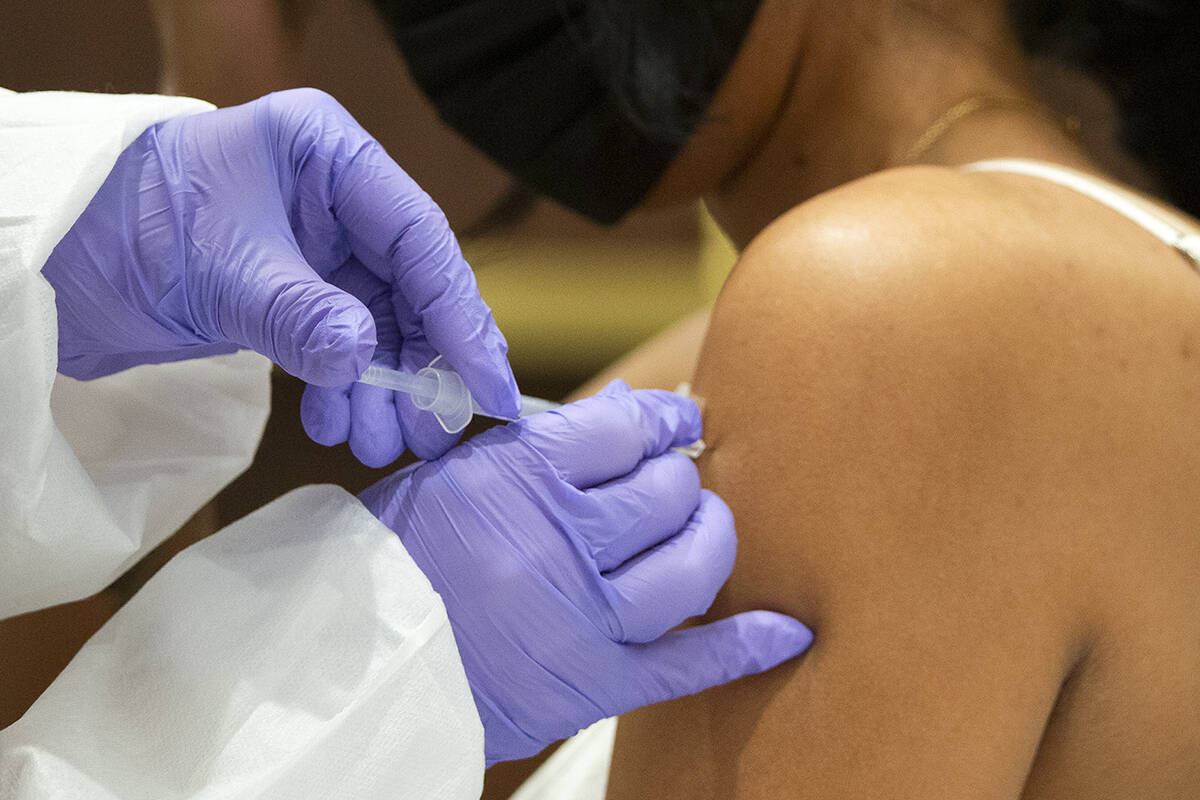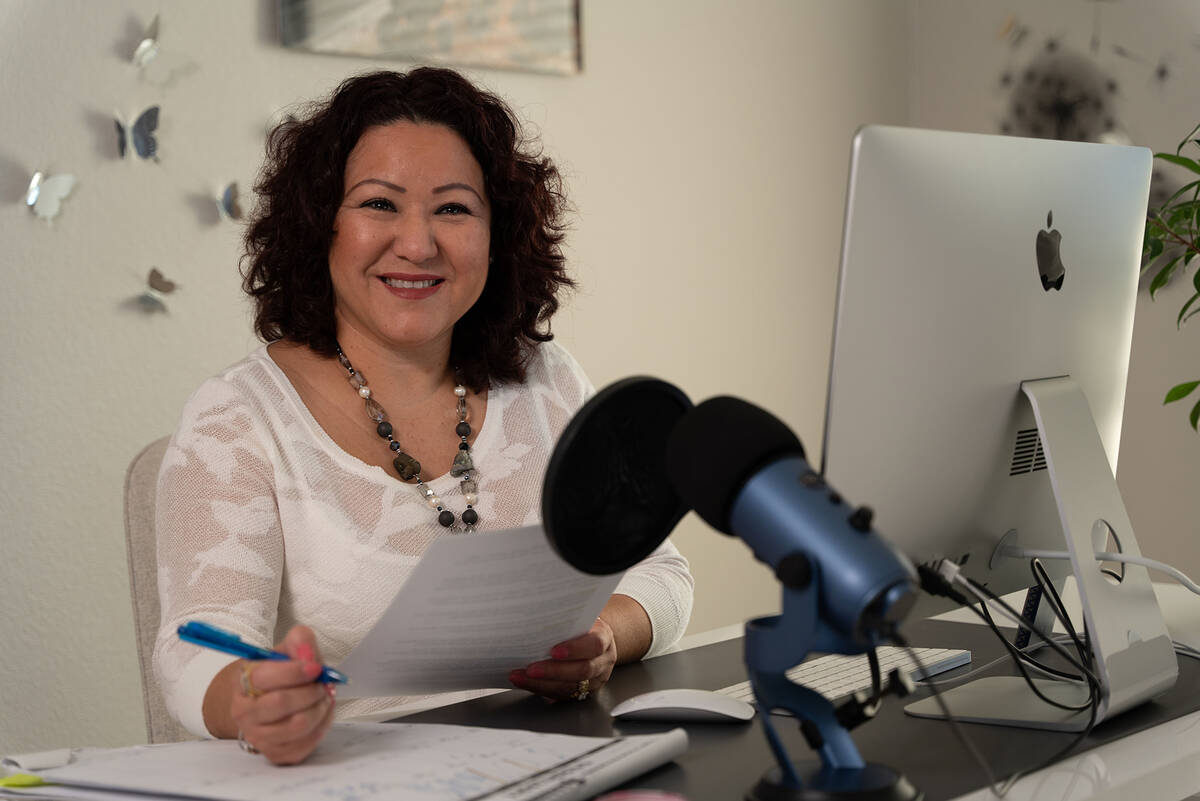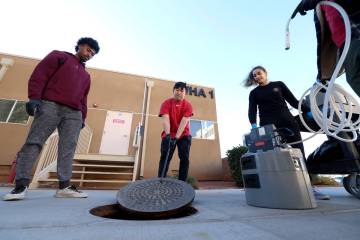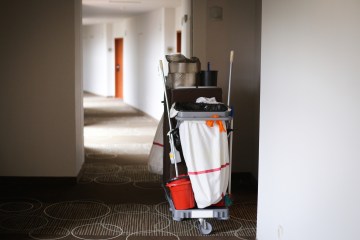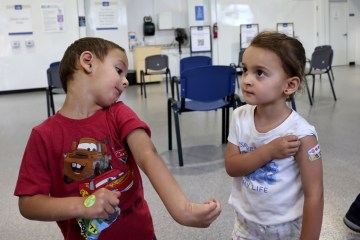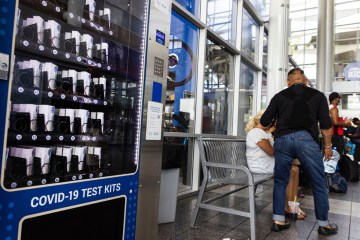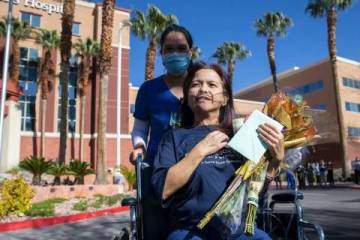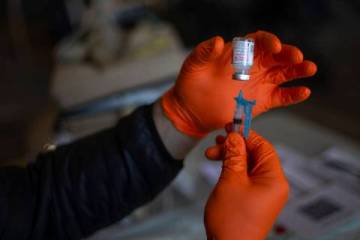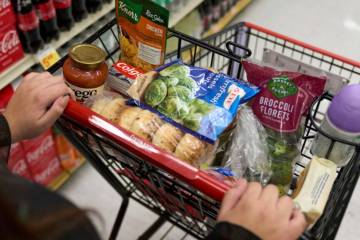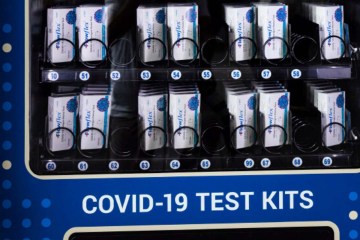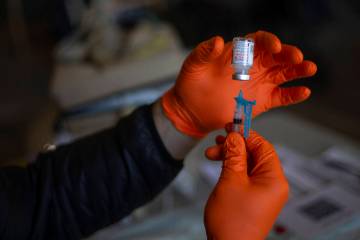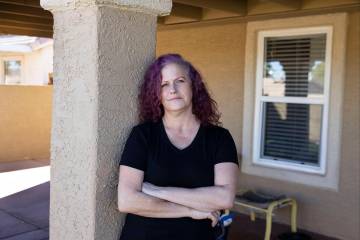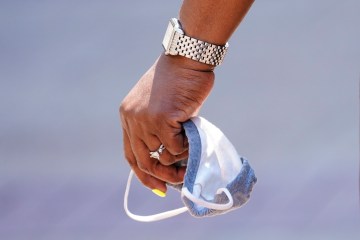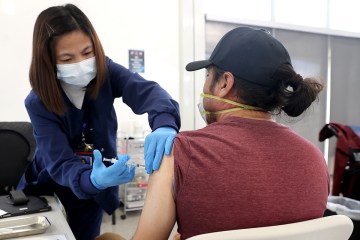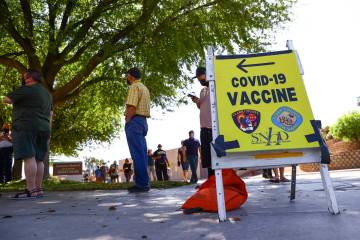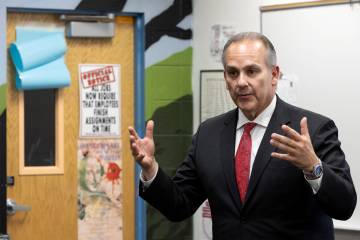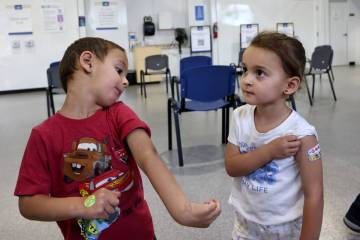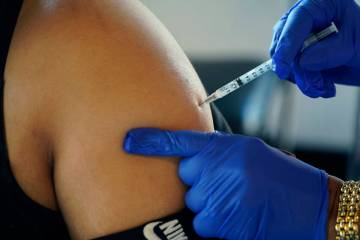Why are fewer Nevadans getting vaccinated during pandemic?
Fewer Nevadans are getting vaccinated against COVID-19 now than at any other time in the pandemic, public health data shows.
The seven-day average of new vaccinations initiated reached a high of 16,530 on April 11, 2021, with a low of 417 on March 10 of this year, according to data from the Nevada Department of Health and Human Services.
Nationwide after last April, despite vaccination mandates for some employees and outreach efforts across communities, “we just hit a wall,” said Dr. Paul Offit, director of the Vaccine Education Center and an infectious disease specialist at Children’s Hospital of Philadelphia.
“I think there is a certain percentage of people in this country who cannot be convinced to be vaccinated,” said Offit, a national authority on vaccines.
For this group, no amount of information probably will change their minds, he believes.
“My sense is that it’s not really an information-deficit problem,” Offit said. “I think it’s more of a cultural problem: ‘I’m not going to be the kind of person who’s told what to do. I’m not going to have the government tell me what to do, or what I should do for my family.’ ”
But state and local public health officials aren’t giving up, even as they revise their expectations and approaches. They have their work cut out for them. As cases of COVID-19 plummet, overall doses administered — including second doses and booster shots — also are at their lowest point since the first week of vaccinations in mid-December 2020.
Changing the goal
At the start of Nevada’s COVID-19 vaccination effort, the goal was to get 70 percent of Nevadans inoculated, said David Perez, equity and community director for nonprofit Immunize Nevada.
The numbers have fallen short: Just 53 percent of Nevadans are fully vaccinated. In Clark County, that figure is 58 percent.
Perez thinks a more realistic immediate goal is 55 percent, while still striving for 70 percent. “That would be a first step, right, getting to 55, and then just chipping away continuously” to increase the percentage one person at a time.
“It is a game of one drop in the bucket at a time,” he said.
Nevada’s vaccination effort has pivoted from operating mass vaccination sites where people eagerly lined up for doses, to identifying and removing barriers to vaccination, including transportation issues, getting time off work and misinformation, said Kristi Zigenis, immunization program manager with the Nevada Department of Health and Human Services.
The effort is using community partners — from nonprofits to primary-care providers to pastors — to spread the word about vaccinations, she said.
“We know that people want to hear the information from a trusted source,” Zigenis said. Efforts also are focusing on zip codes where vaccination rates are lower, she said.
The Southern Nevada Health District is ramping up a grassroots campaign to reach minority populations in specific zip codes with lower vaccination rates. The Arm in Arm campaign will use community leaders to spread a message about benefits of vaccination.
One of these community leaders is Gladys Carpo, who hosts a Spanish–language podcast covering a range of topics. Carpo plans to use the podcast as well as informal social networks to provide vaccination information.
Carpo, who is married to a local doctor and has a 12-year-old son, said she is particularly concerned that some parents aren’t getting their children vaccinated.
“I know as a mother, I want my kid to be protected all the time,” she said. ”We want the best for them (children), and in my opinion, it is to give them the opportunity to grow up healthy.”
Members of her community have been more vulnerable to COVID-19 because of language and education barriers. “They don’t know who to approach,” for information, she said. “They are scared to ask questions.”
Fear as motivation
According to the Centers for Disease Control and Prevention, 65 percent of people in the U.S. are fully vaccinated against COVID-19.
When factoring in natural immunity from prior infection, Offit estimated about 90 percent of people in the country are protected against severe disease. But protection isn’t equally distributed across the country.
“There are communities that are much less vaccinated than others,” he said. “That’s where we see the hospitalizations and deaths.”
With another surge of the virus, these disparities would become more apparent.
“We’re really not at a place where we have good herd immunity,” said Dr. Cort Lohff, chief medical officer for the Southern Nevada Health District.
Herd immunity refers to how, when a community has high levels of immunity, even individuals without immunity, including those who because of age or medical condition can’t be vaccinated, are protected from the spread of disease.
“We really need to get more people vaccinated,” he said. “If we see another surge, and we continue to have the vaccination rates that we have, the outcome is going to be much worse” than if more people were vaccinated.
Another surge might compel more Nevadans to get inoculated. The state saw an uptick in vaccinations during last summer’s delta wave and again with this winter’s omicron surge.
“People to some extent respond to fear,” Offit said. “I think fear is far more motivating than anything else.”
Contact Mary Hynes at mhynes@reviewjournal.com or 702-383-0336. Follow @MaryHynes1 on Twitter.
Vaccine doses in Nevada
A strategy of getting Nevadans vaccinated one person at a time has meant less worry about wasting vaccine doses.
Early in the rollout of the vaccine, when supplies were scarce, public health authorities employed stringent protocols to avoid wasting a single dose.
Now that doses are plentiful, and demand has dropped, a multi-dose vial can be opened to vaccinate a single individual, said Kristi Zigenis, immunization program manager with the Nevada Department of Health and Human Services.
Of 5.6 million doses delivered to the state, about 164,000 – or roughly 3 percent – were designated as wasted for reasons ranging from expiration to broken or misplaced vials, Zigenis said



